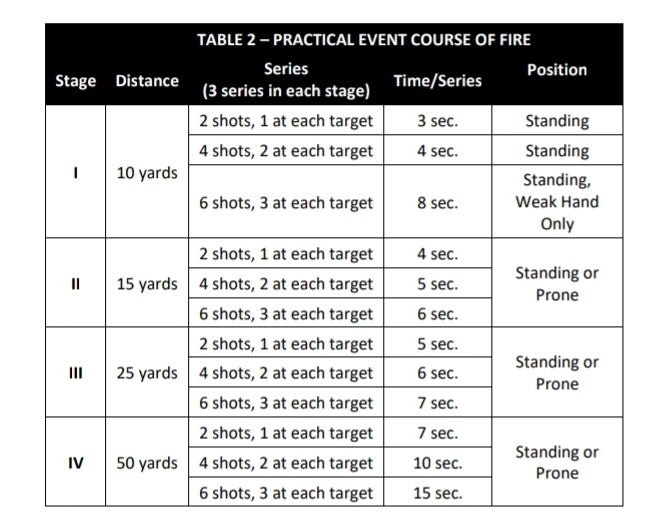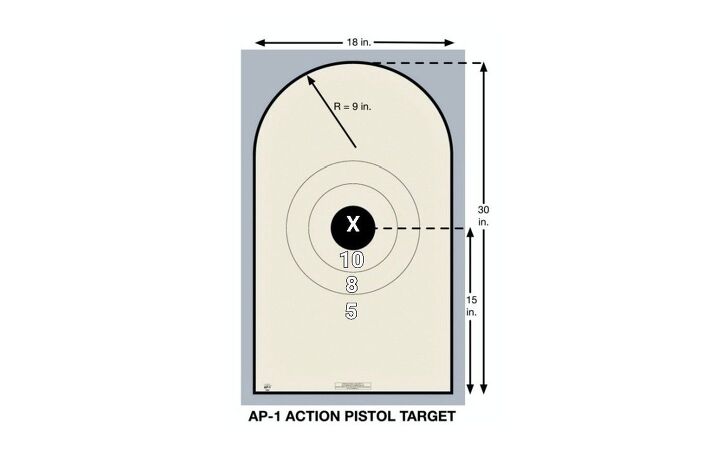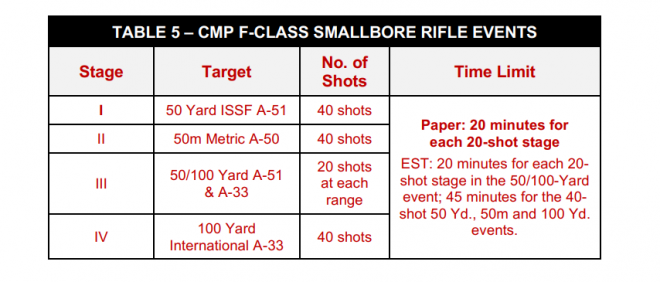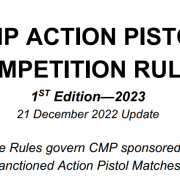The Civilian Marksmanship Program just released their 2023 rule books, which included an entire new shooting discipline. Action pistol matches are now part of the CMP’s repertoire. Let’s take a look at these new rules, as well as some changes to other types of matches.
More Competition Shooting @ TFB:
- New FX Panthera Air Rifle – Made to Win Precision Rifle Competitions
- Getting Started in CMP Service Rifle Competition
- New Rules for the 2022 CMP Smallbore Rifle Competition
- Precision Rifle Series: Gas Gun vs Bolt Action – Which is better?
- POTD: Lithuanian Snipers at 2021 Best Sniper Team Competition
Action Pistol Rules
CMP matches are traditionally based on bullseye-style shooting. Competitors shoot at bullseye targets at set ranges in a set amount of time. Sometimes the allowed time adds a bit of pressure, but it is not the tenth- or hundredth-second race to finish first seen in most action shooting. CMP action pistol is more of an amalgam of traditional bullseye shooting and USPSA/IPSC than a true action shooting sport.
Many features of these rules mimic those of other practical shooting disciplines. There are several pistol categories in the Action Pistol rules, including open, iron sights, production, and optical sights. All stages are fired from the holster. And, as in other action shooting competitions, ammunition must meet a power factor calculation.
Action Pistol Stage Design
One feature that struck me was the unique stage designs used in action pistol matches. Rather than unique stages at each match that competitors have to figure out, the CMP has opted for a menu of standardized courses of fire. These are not USPSA or 3-gun stages, with competitors running from target to target while moving around a target bay with a 270-degree berm. The CMP stages are designed for firing on standard shooting ranges at 50 yards and less, and do not require the competitor to move between shooting locations. Take, for example, the Practical Event stage:

CMP Action Pistol Practical Event Course of Fire
I can already hear the “But USPSA/IPSC/IDPA is better because it’s more real!” comments, but hear me out first: this is not meant to be those competitions. However, CMP action pistol could be a very potent gateway drug to get shooters into those types of matches. The typical CMP shooter skews pretty young or pretty old. Both of those demographics could benefit from a shooting competition featuring target transitions and holster work without intense movement around a shooting bay. This simple style of stage can be run at most shooting ranges rather than the specialized facilities generally used for action-style shooting.
Additionally, each course of fire breaks down into separate strings, none of which contains more than six rounds fired. Why would they cap each string so low? For revolver shooters, and shooters in restrictive states. The CMP is a 50-state organization, and their courses of fire need to be possible across the country. Stages requiring more than ten rounds could be a problem in some places.

The AP-1 target is used for all stages, except the falling plate steel target course of fire (note: the X/10/8/5 are added to this target for reference, but do not appear on the actual target in such bold font)
Smallbore F-Class Rules
F-Class matches are traditionally shot at 600 yards with centerfire rifle calibers. The new 2023 rules add an F-Class match for .22 LR rifles, fired at 50- and 100-yards. As with traditional F-Class, shooters can use front and rear rests to support the rifle during firing. And, in another similarity to the centerfire rules, both F-Open and F-TR (tactical rifle) rule sets are available. Both are limited to .22 LR, but the F-Open rifles have more latitude in their setup while F-TR guns have a lower maximum weight and must be fired from bipods. This is purely my personal speculation, but I would not be surprised if this competition was an effort to provide a match where NRL22 and PRS Rimfire shooters could potentially use their existing rifles.

New for 2023, F-Class Smallbore course of fire
Other Rule Changes
The other rule changes this year are generally the sort of minor tweaks that arise as new situations are encountered. High Power service rifle matches now allow competitors to open up the inside of their magazines to allow longer bullets. Also, the new clues make clear that minor changes to the outside of a rifle are allowed so long as they do not provide an unfair advantage. The rules use the example of anti-walk trigger pins. Under the old rules, those pins could have been enough to make a rifle fail the “general M16 external appearance” test. Since 2016, competitors have had increasing flexibility to add railed handguards, collapsible stocks, and magnified optics up to 4.5x. This latest clarification keeps up that trend.
Conclusion
CMP competitions continue to change and adapt. These new matches should provide opportunities for more shooters to participate in the competitions. Keep an eye on the CMP website for upcoming matches near you.


